Artfully folded pillows of pasta filled with cheese, meat or vegetables, tortellini hails from Bologna, Italy's culinary capital, and is purportedly shaped to represent the goddess Venus' belly button. Recipes for tortellini and serving it don't appear until 1570, though. In the United States, almost anything goes for filling and sauce -- but traditional broths and mild sauces allow tortellini's subtle flavor and delicate texture to shine.
Tradition
In its place of origin, tortellini is only served in a slow-simmering broth made from beef and veal bones, carrots, celery and onions. Serving it with a thicker, more flavorful sauce eclipses the delicate flavors of the filling that often featured expensive, scarce ingredients such as prosciutto and Parmesan Reggiano, say purists. Tortellini en brodo, as it's known, isn't truly tortellini with a sauce, but it is one of the most elegant ways to serve this stuffed pasta.
Hot Dishes
Tortellini you purchase from the grocery store has much less character and was made with less care than traditional homemade variations. When choosing a sauce, consider what's inside and how to accent this filling. A sauce may bring interest to an otherwise boring pasta dish.
- A classic marinara can perk up a pedestrian cheese tortellini.
- Pesto -- made of ground Parmesan, pine nuts and basil -- works for cheese or mild tasting chicken-filled versions.
- Strongly flavored variations, such as proscuitto- or pumpkin-filled tortellini, taste best with a mild sauce, such as a garlic, butter and sage blend.
- Spinach and cheese tortellini work with a creamy mushroom sauce made with heady porcini mushrooms and heavy whipping cream.
- A rich pink sauce, consisting of classic tomato sauce with a splash of heavy cream, should be paired only with the simplest of tortellini, such as one stuffed with ricotta and parsley.
- For homemade tortellini stuffed with vegetables, such as fresh radicchio for example, may need no sauce at all -- just a dusting of Parmesan Reggiano cheese.
Salads
Tortellini also appears in cold salads as a stand in for plain pasta. This may make Italians shudder, but can bring a zesty change of pace at your next barbecue or potluck. Commercial or homemade Italian-style dressings or vinaigrettes pair best with such salads that also include ingredients such as bell peppers, carrots and salami. Creamy mayonnaise-based dressings would overwhelm the tortellini flavor and result in too heavy of a dish.
Related Articles

How to Bake Sicilian Ziti

How Long Can You Refrigerate Nacho ...
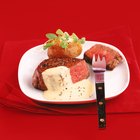
The History of Bearnaise Sauce
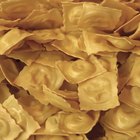
How to Serve Ravioli
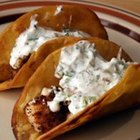
How to Make Fish Taco Sauce

Ways to Cook Frozen Spinach As a Side ...
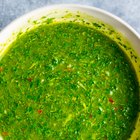
Add Flavor to Foods With This ...
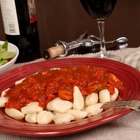
How to Freeze Marinara Sauces

What Can I Put on Steamed Broccoli ...

How to Use Ricotta Cheese for Cream ...

The Best Melting Cheeses
List of High Temperature Cheeses

How to Make Fresh Clam Sauce
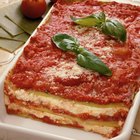
Can I Use Queso Fresco in Lasagna?

Substitute for Shredded Parmesan Cheese

What Is a Chateau Cut?
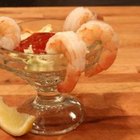
How to Make Shrimp Cocktail
What to Serve With Irish Bacon & ...

How to Make Homemade Mac & Cheese
Italian Food Nutritional Values
Writer Bio
Andrea Cespedes is a professionally trained chef who has focused studies in nutrition. With more than 20 years of experience in the fitness industry, she coaches cycling and running and teaches Pilates and yoga. She is an American Council on Exercise-certified personal trainer, RYT-200 and has degrees from Princeton and Columbia University.